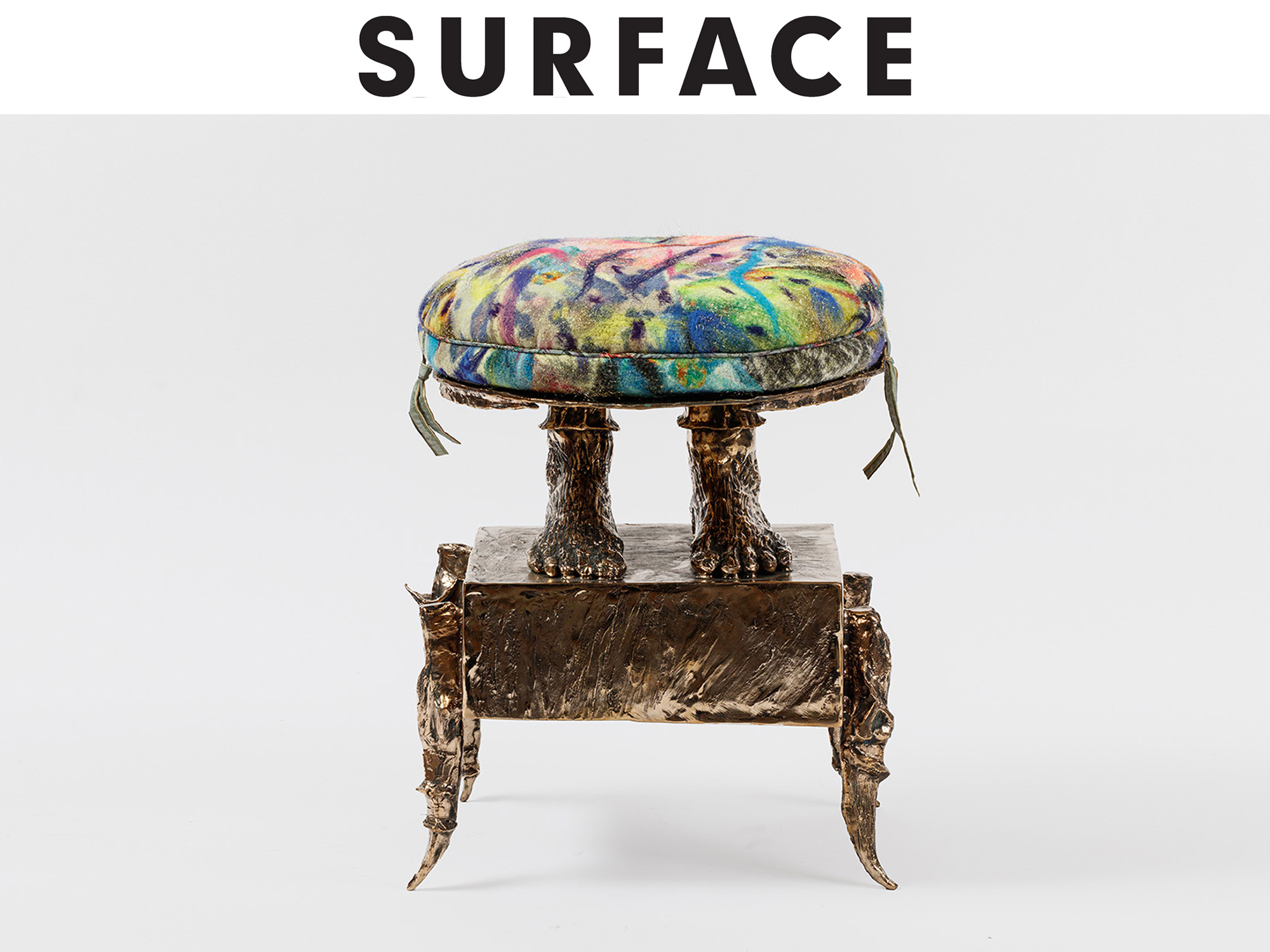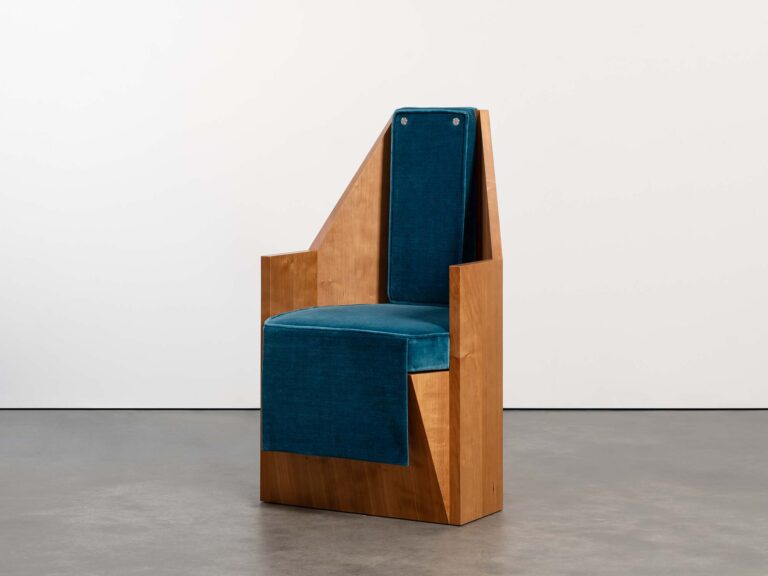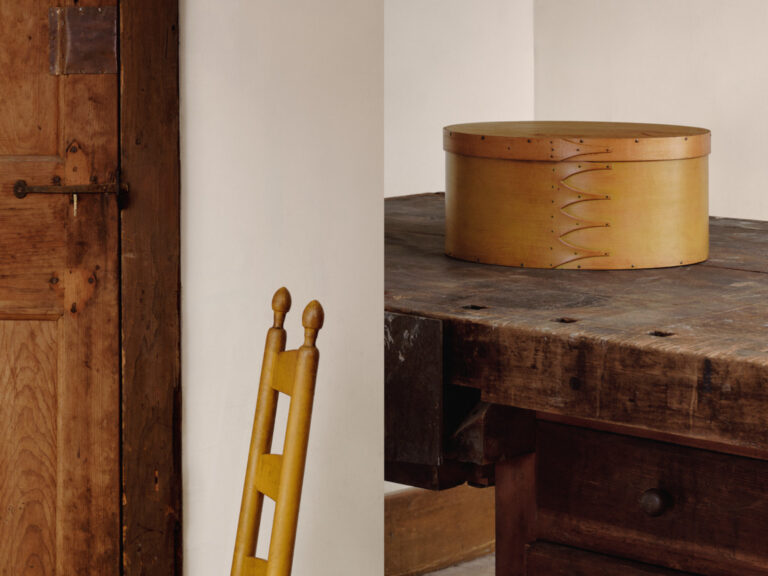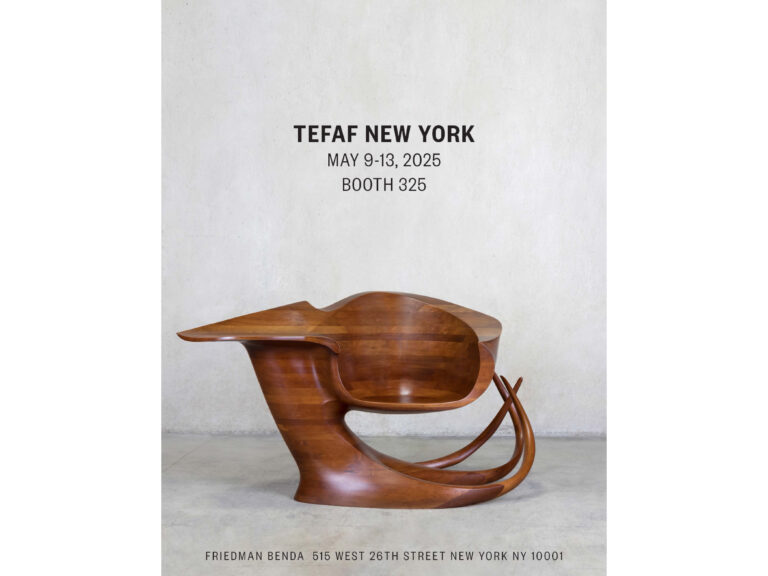By Jesse Dorris
Using lost-wax casting to render mythological symbolism in memorable one-offs, William Farrell and Elliott Hundley mediate on history’s oceanic ebbs and flows.
Duality is central to ancient mythology, from Egyptian gods who unite light and dark within themselves to the two-faced Roman god Janus. This summer, Friedman Benda’s Los Angeles gallery showcases the work of another dynamic duo, Elliott Hundley and William Farrell, whose work as Farrell Hundley utilizes ancient narratives and techniques to make lost-wax casting objects that appear eerily out of time. The pair recently Zoomed with Surface for a conversation, edited and condensed below, exploring their origin story, their relics of the future, and the prospects of their process.
How did you find each other?
EH: Will and I were friends. He was living in New York and we were talking about what he was going to do when he got out of school. He told me he had all these plans. But I asked him, what would you do if you could do anything? He said: make furniture. And I said, well, if you want to do that, I’ll do it with you. He moved to L.A. and we did it. It was fun for me to think about something different from my own studio and learn from his knowledge of design.
WF: And he had this amazing studio space. He was kind of the force who pushed me to make something, and lent me a corner of the studio and kept me company. In the pandemic, we had time to experiment and play around.
What about the lost-wax casting technique appeals to you?
EH: It’s a way to build objects organically rather than architectonically.
WF: It hasn’t changed for the better part of, like, 5,000 years.
EH: Most of them are one-offs, and there are a lot of irregularities. The assemblage is kind of Frankenstein: the sutures show.
The subject matter you’re working with tends to be equally ancient. Did the two interests arise simultaneously, or feed off each other?
EH: They fold into each other. But when we started working, William was reading about the history of the Bronze Age, and Greek literature is kind of my wheelhouse.
WF: I like the idea of making an object that can float between time, that could be unearthed from thousands of years ago or from a future history.
EH: There’s an aspect of world-building, but there’s also an aspect of production design, almost cinematic set dressing.
Are you building narratives in your head while you’re creating, or are you building forms that in turn tell you their story?
EH: It happens both ways. Sometimes we go in with a really specific narrative: there’s a table we made called Lukka, which is the name for one of the Sea Peoples in ancient Egypt who were infamous for conquering kingdoms as the Bronze Age collapsed. We covered the table in lobster shells, collaging them into the piece so it looked like it had emerged from the sea. After the collapse of the Bronze Age, civilizations were looking at these huge works, like the Mycenaean walls, and making mythologies of huge beings called Cyclops that would have been able to make them. Meanwhile, people would take stones from the pyramids, from walls, to make their own work. And so our Cyclops mirror is a collage of four or five different castings coming together.
The fabrics on your cushions and tapestries are also telling stories.
EH: There’s no specific narrative. But this felting machine runs hundreds of needles through fabric and tangles the layers, so it’s a way to collage without glue. It’s a way to repurpose old clothing. I’ve been mixing ties and scarves and T-shirts with new wool and new cashmere.
Which you collect, along with furniture from auctions?
EH: My house is full of stuff, even the elevator right now has all this furniture I bought at auction for cheap. I focus on things that are old and beautifully made but that nobody wants because they have imperfections. We made a desk from a 1930s one with a ruined top, and carved new forms and collaged elements onto it.
Do you think that approach defines your practice at the moment? It would make it difficult to branch into making editions, for example.
EH: Our furniture isn’t the kind that fills the room, it’s like the jewelry or the accent.
WF: We’re learning this as it goes. There will always be an element within us that will make one-offs—we love the freedom of cutting up a work, putting it back together, and reassembling.
EH: Even if we make molds that we can edition, I know I’m going to want the patina to be different on every one. Rather than force it to adhere to some standardization, I’d rather enjoy the sensory pleasure of the moment. I’m not going to line them up like a scientist and make sure they’re the same color. That industrialization and production doesn’t really interest me, personally.










